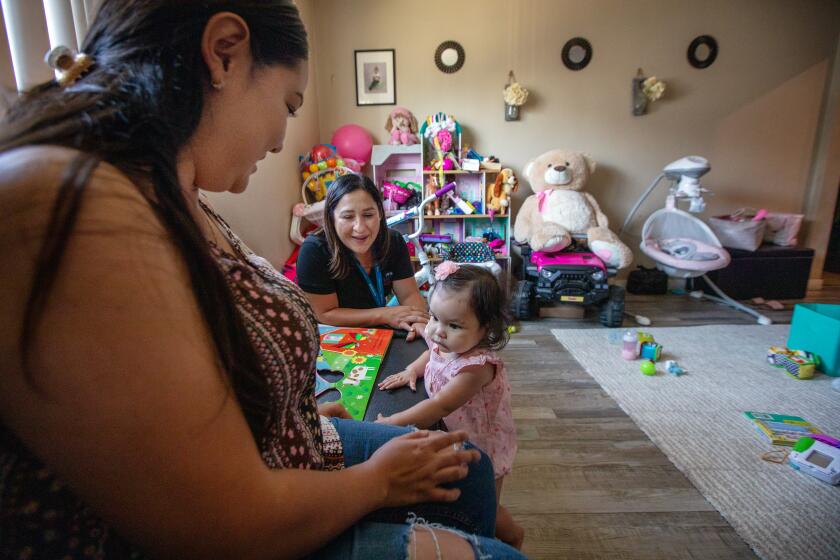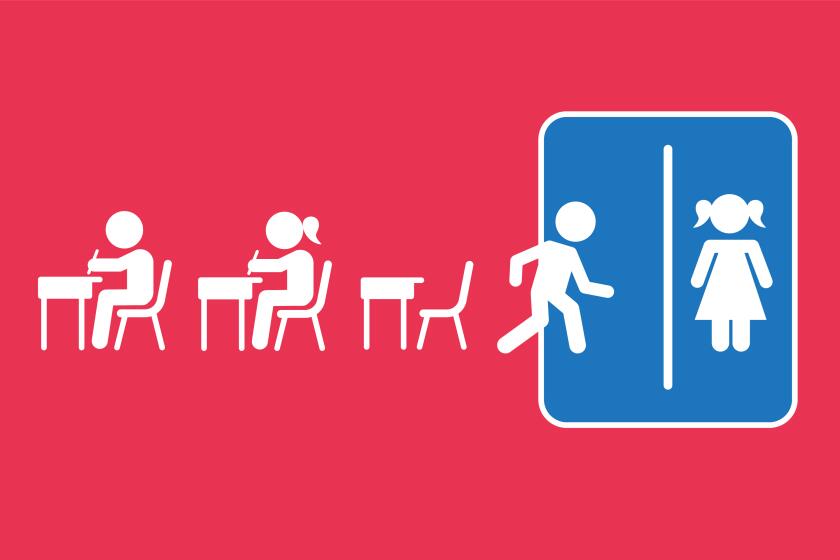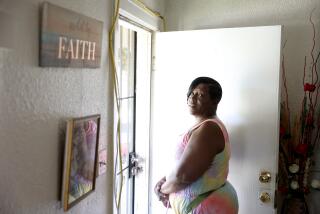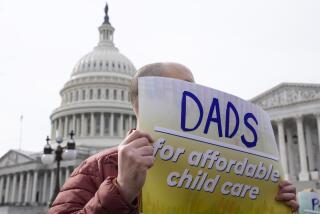Child care has long been ‘broken.’ Things may get worse this weekend

Sirens are sounding for American families that on Saturday the nation will fall off a “child-care cliff.”
That’s when $37 billion in child-care pandemic relief from the federal government will expire. Across the nation, providers have used that money to pay their teachers more, buy cleaning supplies and food amid rising inflation, and keep their doors open despite low enrollment during the COVID-19 pandemic emergency. An additional $15 billion in federal child-care relief is set to expire in September 2024.
The emergency money was meant as a Band-Aid to sustain an industry hobbled by the pandemic shutdowns. But the loss of funds could have significant consequences for an industry already on the brink of a crisis.
How is the loss of federal funds predicted to affect the child-care industry nationally?
An oft-cited report from the Century Foundation, a progressive think tank, found that more than 70,000 child-care programs — one-third of those supported by the American Rescue Plan’s stabilization funding — could close when funds expire, leaving 3.2 million children without child care.
In California, which received $5 billion in federal funds, the report projected more than 13,000 programs would probably close, and 84,000 children would lose access to their care, a number that some in the state dispute.
California’s tobacco tax funds resources for young kids. But with sales declining and a flavored tobacco ban in place, First 5’s child programs are at risk.
The estimates were based on an October 2022 survey by the National Assn. for the Education of Young Children of 12,000 providers nationwide; one-third of directors and owners receiving pandemic relief funds reported that they would have closed permanently without the grants.
One in four said they would raise tuition for working families when the federal funds expire. More than a quarter said they would cut staff wages, down from an average hourly rate of $14.22 nationally.
But the actual effects of the losses will probably vary greatly by state, with California faring better than most.
How did it get this bad?
The child-care system was in bad shape even before the pandemic, with many working parents unable to find or afford care. More than half of parents spend more than 20% of their income on child care, yet many providers can barely afford to keep their doors open. The problem, at its core, is that child care simply costs more to provide than parents can afford to pay.
In 2021, Treasury Secretary Janet L. Yellen described the industry as “a textbook example of a broken market.” One possible solution, advocates say, is to have the federal government chip in for more of the cost. The pandemic relief funds were a stopgap measure to do just that. But many advocates hoped robust federal funding would become permanent through the Build Back Better Act. The proposal, however, failed in the Senate.
Legislation proposed in Congress this month would extend federal child-care payments with an additional $16 billion in funding for each of the next five years. But with new funding unlikely to pass a divided Congress and the federal government grappling with a possible shutdown, advocates say the child-care industry could enter a tailspin.
“Early educators make poverty wages,” said Annie Dade, a policy analyst at the UC Berkeley Center for the Study of Child Care Employment. “The injustice existed pre-pandemic and will only be made more obvious now.”
In states such as Minnesota that required providers to use the pandemic funds to increase wages, Dade said, the loss of funds could quickly lead to a pay cut for workers. In states that have already moved to offset the loss of federal funds, such as New Mexico and Massachusetts, the impact is expected to be minimal.
What is likely to happen in California?
Although California’s child-care industry still suffers from access and affordability problems, the state has recently moved to improve funding for low-income families and the programs that serve them.
California is likely to stave off the worst effects of the federal fund losses, in part because the money wasn’t used to directly increase worker wages, but also thanks to recent efforts to backfill and augment the funding and prop up the faltering child-care sector, experts across the industry said.
California used its $5-billion share of the pandemic funds to give cash stipends to child-care programs, increase the number of kids who receive state-subsidized care, and pay providers even when children were absent during the pandemic. The “family fees” paid toward subsidized child care were also waived.
Although the final stipend payment will be distributed in November, providers will be cushioned from a funding free fall that may be felt in some other states.
This year’s California budget made permanent the pandemic-era waiver for most of the fees low-income families pay toward subsidized child care and dedicated $1.6 billion to child care over the next two years. Also, the state finalized an agreement with the Child Care Providers United union in June, extending several other pandemic-era protections, boosting caregiver wages, and creating the nation’s first retirement fund for child-care workers.
California’s 4-year-olds are entering transitional kindergarten. But many young learners aren’t fully potty-trained, an issue public schools are grappling with.
“California has done a very good job delaying the impact of a cliff,” said Donna Sneeringer, chief strategy officer
for the Child Care Resource Center, a nonprofit that helps connect families in northern Los Angeles County and San Bernardino County with child care and subsidies. “Is California good to go in perpetuity? Absolutely not. Are we holding things together with a Band-Aid and state revenue? Yes.”
The end of the federal stipends for providers is unlikely to lead to mass program closures in California, said Nina Buthee, executive director of EveryChild California, a membership association for child-care centers.
“Absolutely not,” Buthee said, when asked whether the Century Foundation’s projection of 13,000 programs closing in California was accurate. Many private providers haven’t received a stipend since 2021, she added, and the money was cumbersome to claim.
California pain points persist
The industry still faces myriad pain points — teacher shortages, the high cost of materials and utilities eating into narrow profit margins, parents who still haven’t brought their children back after the pandemic, and students leaving centers for transitional kindergarten classrooms, Buthee said
“I think child-care programs could absolutely close,” she said. “But it’s not because of the cliff.”
State Sen. Monique Limón (D-Goleta), however, said she was concerned that the federal cuts might still have a “trickle-down” effect on California’s child-care system. “It’s not lost on us we will absolutely feel an impact,” she said. Although the state made major investments in child care this year, she added, “I don’t know if we will be able to get that level of investment year after year after year.”
Others in the industry expressed frustration that the federal government had not moved to continue the payments.
“We take two steps forward and then we go right back,” said Mary Ignatius, executive director of Parent Voices California, which represents parents receiving state subsidies to help pay for child care. “It doesn’t always feel like progress because as soon we get something, something gets taken away instead of it moving us to the next goal post.
“We’re just never going to be able to one-time fund our way out of this crisis,” Ignatius said. “It really requires longer-term, ongoing investment at much higher levels of intervention.”
What does this mean for parents who do not qualify for subsidies?
Most of the federal pandemic child-care funding, as well as California’s recent actions, primarily affect programs that accept subsidies from the state to care for children from low-income families.
Day-care programs that care for families that pay privately were not eligible for most of the federal stipends, and their rates are not affected by the recent state increases that were part of the union negotiation.
The private market continues to suffer from teacher shortages, rising tuition, a scarcity of slots for infants and toddlers as well as losses to the state’s transitional kindergarten program. But middle-class families that pay out of pocket for care are unlikely to feel much of a change from the expiration of federal funds, nor will they be helped significantly by the state’s recent moves to bolster the child-care industry.
Up close with two California child-care programs
Little Sprouts Language Immersion Preschool in Los Angeles’ Mid-City neighborhood had been open for only a few months when COVID-19 hit. Paloma Corona, who runs the program for 14 children out of her home, said there was a time when she was down to one student.
Suddenly, the cost of everything started to skyrocket — cleaning supplies, gloves, food, gas, diapers. Things got so bad that she had to lay off one of her staff members. “We thought about closing down our doors multiple times,” she said.
She pulled through, thanks in part to the federal funds, which she used to make ends meet, repair her yard and offer bonuses to her remaining employees to keep them from leaving for other job opportunities. “It was definitely very helpful,” Corona said.
As the expiration date for the funds grew closer, Corona said, she was worried about what it would mean for her business. As part of the negotiating team for the Child Care Providers United, which represents the state’s 40,000 home child-care providers, Corona said, she was sure to attend every meeting to make certain the union got a contract that would fill in the losses.
When an agreement was finally reached — which included higher pay for providers, a backfilling of the pandemic-era programs, and a promise to change the way rates are set in the future — Corona was relieved. There are still months when she makes so little money that she doesn’t pay herself a salary, but the new contract meant that the cliff had been averted; her business would survive.
“We feel more confident that something good is coming,” Corona said. “We’re not at the point where we’re looking for another job, but we have a long way to go as an industry.”
But Jennifer Carter, who owns and operates Oak Tree Learning Center, a child-care center with three branches in San Bernardino and Los Angeles, said she’s far less comfortable with what the future holds for her business.
When enrollment dropped precipitously during the pandemic, the federal stipends helped sustain her. The state’s efforts to backfill some of the federal losses — which includes an increase to her rates for low-income children receiving state subsidies — will probably help. But there are just too many changes for the industry right now to be sure how everything will play out.
Take her enrollment numbers, for example. Families are finally starting to bring back their children, but she’s losing others to the state’s transitional kindergarten expansion in the nearby public schools. Meanwhile, she has to pay her teachers higher salaries to compete with Starbucks, Costco and fast-food chains. But she can’t raise tuition; her families simply can’t afford it.
“I feel almost like there are too many parts moving and changing all at once,” she said. “It’s like when you play Jenga, and you pull out one piece at a time to see what holds up.”
This article is part of The Times’ early childhood education initiative, focusing on the learning and development of California children from birth to age 5. For more information about the initiative and its philanthropic funders, go to latimes.com/earlyed.
More to Read
Sign up for Essential California
The most important California stories and recommendations in your inbox every morning.
You may occasionally receive promotional content from the Los Angeles Times.













